We asked several vendor executives a series of three questions related to their expectations and plans for 2014.
What emerging technologies will have the biggest impact on physician practices over the next 12-18 months?
![110201435707PM_thumb[3] 110201435707PM_thumb[3]](http://www.histalkpractice.com/wp-content/uploads/2014/01/110201435707PM_thumb3.jpg)
Raul Villar, president, ADP AdvancedMD
“Big data” technology will grow significantly. With a continued push on Meaningful Use and the rise of ACOs, business intelligence and big data will have a profound impact on preventative care and on financial management of health care organizations including independent practices. With new technology, doctors will be able to immediately identify their at-risk patients, track and manage patients more closely, monitor the spread of diseases, and take preventative measures to keep patients from graduating to chronic diseases.
Mobile technology adoption will continue to increase over the next 12-18 months although we expect Apple and the iPad in particular to maintain dominance. This adoption will greatly contribute to physician freedom and flexibility and stronger patient care.
![114201455328PM_thumb[3] 114201455328PM_thumb[3]](http://www.histalkpractice.com/wp-content/uploads/2014/01/114201455328PM_thumb3.jpg)
Jim Hewitt, VP of solutions development, Allscripts
Clients are telling us that population health management is a strategic imperative. Technology must be able to aggregate and harmonize data from multiple disparate systems and provide real-time reporting and alerts.
We’re also seeing a proliferation of third-party apps that have powerful possibilities in personalized medicine. Technologies that harness genetic and genomic information, for example, can help providers make better clinical decisions.
![114201463731AM_thumb[3] 114201463731AM_thumb[3]](http://www.histalkpractice.com/wp-content/uploads/2014/01/114201463731AM_thumb3.jpg)
Todd Rothenhaus, MD, CMO, athenahealth
There will be a new class of technology and most important to note, a new class of services that will emerge. The big honking software systems that cost millions of dollars and take years to deploy are showing massive vulnerabilities. They’re too expensive, too taxing to run and update, they have gaps in their ability to truly manage populations of patients outside of single health systems, and they only get physician practices so far when it comes to plugging into the care ecosystem with which patients seek and get care.
While it’s taken too long in health care, it’s becoming clear that everyone does not need to be on the same system to share information and gain a complete view of care. Technology supported by services, will emerge that will make it possible for information to surround the patient as he or she moves between care settings, so physician practices can better connect, co-exist, and coordinate with hospitals. This new class of technology and services will make true care coordination possible and will provide the financial and clinical visibility necessary to manage risk contracts.
Physicians need to be looking for technology and services that can help them identify patients in need of care or adjustments in care, engage in proactive outreach to those patients, and steward them through their experience of care. It’s about advancing connectivity which static software can’t and won’t do.
When you look at all the start-ups and venture funding going into health care it’s all aimed toward the cloud. Many enterprise software systems are failing in a public way and because of these failures, as well as the capital expenditures they require, they’re no longer a low-risk move for CIOs. The cloud, and service oriented vendors, will have the biggest impact on all of health care in the next 12-18 months.
![110201491427AM_thumb[3] 110201491427AM_thumb[3]](http://www.histalkpractice.com/wp-content/uploads/2014/01/110201491427AM_thumb3.jpg)
Albert Santalo, CEO, CareCloud
Mobile capability for an EHR or practice management system has obviously become vital for any vendor to offer their clients. Enhanced analytics and giving practices greater insight into their operations and provision of care will become paramount as well. We are doubling down on both these fronts in 2014.
![110201491941AM_thumb[3] 110201491941AM_thumb[3]](http://www.histalkpractice.com/wp-content/uploads/2014/01/110201491941AM_thumb3.jpg)
Stephen Ober, MD, chief medical officer, Emdeon
Twelve to 18 months is a long time in the technology world. During this time frame I believe we will see a variety of IT solutions:
1) An explosion of real-time apps informing a physician of critical information to improve care delivery. These will most likely come via mobile platforms. An example: your patient is in the OR and ready for the procedure, here are the labs on your patient from this morning, your patient John Smith needs a refill of his prescription for Amoxicillin 250 mg QID.
2) Big Data analytics will also impact provider practices in 2014. For the first time, the industry can actually aggregate patient level data and provide feedback to providers with information on an individual patient’s overall health risk, etc. These systems can push out preventive care alerts (no flu shot was given to this patient) and also focus on chronic care (this patient hasn’t received an HbA1C this year). These results will be aggregated and can affect their overall reimbursement in 2014.
![110201451352PM_thumb[4] 110201451352PM_thumb[4]](http://www.histalkpractice.com/wp-content/uploads/2014/01/110201451352PM_thumb4.jpg)
Patrick Hall, EVP of business development, e-MDs
Patient-facing tools will continue to become more robust, more expected (by patients), and potentially offer tremendous time and cost-savings for practices. Practices will need to determine which technologies they can adopt.
Much like dealing with the omnipresent pharma marketing that has been known to have sometimes negative effects on the doctor:patient relationship, physicians will also need to learn how to communicate with patients about which technologies are useful, and which are not.
![114201442639PM_thumb[3] 114201442639PM_thumb[3]](http://www.histalkpractice.com/wp-content/uploads/2014/01/114201442639PM_thumb3.jpg)
Tee Green, CEO, Greenway Medical Technologies
To address the previously mentioned challenges, physician practices will need to create a foundation for improved quality and efficiency by implementing an integrated system that streamlines electronic health records and practice management functions.
New technology solutions will also be required to extend important functionality to consumers, including patient engagement tools such as portals and care coordination resources.
Finally, there will be a variety of emerging technologies that help physicians better manage the clinical and financial challenges resulting from new value-based care models. These include population health management platforms, advanced analytics and clinically driven revenue cycle management systems that close the loop between clinical, administrative and financial processes. Together, these new technologies will help physicians better manage populations of patients as opposed to transactions of care while improving the financial sustainability of their practices.
![110201440425PM_thumb[3] 110201440425PM_thumb[3]](http://www.histalkpractice.com/wp-content/uploads/2014/01/110201440425PM_thumb3.jpg)
Tom Giannulli, MD, CMIO, Kareo
I really believe that truly mobile EHR is finally having its day in the sun. This trend will only grow over the coming year. The technology has finally caught up with what physicians want. EHR vendors are now offering a full-featured native app for the iPad that allows providers to do almost everything on a tablet. The ease of use and simplicity of the truly mobile EHR allows providers to really engage patients instead of getting swivel chair fatigue as they turn back and forth from the desktop to the patient.
![110201440315PM_thumb[3] 110201440315PM_thumb[3]](http://www.histalkpractice.com/wp-content/uploads/2014/01/110201440315PM_thumb3.jpg)
Nick van Terheyden, MD, CMIO, Nuance
MHealth and mobile speech will be the biggest technological enabler in allowing physicians to engage with patients. Patient engagement is the blockbuster drug of the 21st century. Having patients regularly participate and contribute to their own care through mobile devices and apps, as opposed to being observers and receivers of care, will bring seismic changes to healthcare. Through mobile health, we will see a huge wave of people empowered in their care and the care of their loved ones, and ensuring everyone is fully engaged and part of the process will revolutionize the delivery of medicine.
This increased engagement will go hand-in-hand with the industry’s shift away from the current fee-for-service model. Coupled with the increased granularity that will result from the transition to ICD-10, these changes will transform the way we practice medicine. Emerging and existing technologies that enable these transitions and ease the burden on physicians during the evolution will be crucial investments for practices to make.
![110201453629PM_thumb[3] 110201453629PM_thumb[3]](http://www.histalkpractice.com/wp-content/uploads/2014/01/110201453629PM_thumb3.jpg)
Irtaza Barlas, director of software engineering NueMD
Biggest impact of emerging technologies:
a) Online portals, EHRs, PHRs will reduce the waiting-room paper work. This potentially will also produce better quality data that will be used by data-mining companies to detect patterns and behaviors to empower the physician as well as the patients.
b) Wearable technologies’ (such as step counters, sleep monitors, etc) generated data may see more integration into the medical records systems.
c) Cloud-based PM systems will meet the challenges posed by ICD-10 transitions and MU2 interactivity requirements better then the older stand-alone, or client-server type systems.
d) Big data may become overwhelming. Developers and physicians will need to work together to sort pertinent data from irrelevant data and be able to present it in a clear, focused way. This will be imperative to have big data make a physician’s job easier as opposed to overwhelming.
![110201485430AM_thumb[3] 110201485430AM_thumb[3]](http://www.histalkpractice.com/wp-content/uploads/2014/01/110201485430AM_thumb3.jpg)
Chip Hart, director of strategic marketing/sales director, Physician’s Computer Company
Medicine moves so slowly as a rule that it’s only now that fairly common and established technologies – texting, mobile phones, tablets – are poised to make the biggest impacts.
In our primary care world, “social media” is the elephant in the room. Some practices are starting to get savvy with Facebook, blogging, and Twitter, for example, and reaping the rewards. The others will be left behind.
![110201435835PM_thumb[3] 110201435835PM_thumb[3]](http://www.histalkpractice.com/wp-content/uploads/2014/01/110201435835PM_thumb3.jpg)
Michael Brozino, president and CEO, simplifyMD
Over the next 12 to 18 months we will witness practices continuing to replace their antiquated, server-based technologies with more efficient, flexible, cloud-based softwares that allow physicians to use their preferred workflows.
These more efficient, nimble technologies will offer physicians additional tools to access, manage and analyze clinical and financial data to better monitor patient populations. As government and commercial health insurers pursue payment models that reward physicians for achieving clinical quality metrics across populations, such as Accountable Care Organizations, Patient-Centered Medical Homes, and Meaningful Use of EHRs, data capture and analysis is crucial.
Physicians will need to incorporate technologies, such as EHR and PM systems, that will support their success in those programs by facilitating and, in some cases, streamlining their proven, effective practice workflows so productivity will be unaffected by increased data capture and reporting demands.

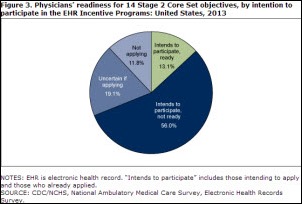
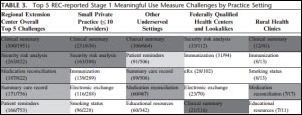




![110201435707PM_thumb[3] 110201435707PM_thumb[3]](http://www.histalkpractice.com/wp-content/uploads/2014/01/110201435707PM_thumb3.jpg)
![114201455328PM_thumb[3] 114201455328PM_thumb[3]](http://www.histalkpractice.com/wp-content/uploads/2014/01/114201455328PM_thumb3.jpg)
![114201463731AM_thumb[3] 114201463731AM_thumb[3]](http://www.histalkpractice.com/wp-content/uploads/2014/01/114201463731AM_thumb3.jpg)
![110201491427AM_thumb[3] 110201491427AM_thumb[3]](http://www.histalkpractice.com/wp-content/uploads/2014/01/110201491427AM_thumb3.jpg)
![110201491941AM_thumb[3] 110201491941AM_thumb[3]](http://www.histalkpractice.com/wp-content/uploads/2014/01/110201491941AM_thumb3.jpg)
![110201451352PM_thumb[4] 110201451352PM_thumb[4]](http://www.histalkpractice.com/wp-content/uploads/2014/01/110201451352PM_thumb4.jpg)
![114201442639PM_thumb[3] 114201442639PM_thumb[3]](http://www.histalkpractice.com/wp-content/uploads/2014/01/114201442639PM_thumb3.jpg)
![110201440425PM_thumb[3] 110201440425PM_thumb[3]](http://www.histalkpractice.com/wp-content/uploads/2014/01/110201440425PM_thumb3.jpg)
![110201440315PM_thumb[3] 110201440315PM_thumb[3]](http://www.histalkpractice.com/wp-content/uploads/2014/01/110201440315PM_thumb3.jpg)
![110201453629PM_thumb[3] 110201453629PM_thumb[3]](http://www.histalkpractice.com/wp-content/uploads/2014/01/110201453629PM_thumb3.jpg)
![110201485430AM_thumb[3] 110201485430AM_thumb[3]](http://www.histalkpractice.com/wp-content/uploads/2014/01/110201485430AM_thumb3.jpg)
![110201435835PM_thumb[3] 110201435835PM_thumb[3]](http://www.histalkpractice.com/wp-content/uploads/2014/01/110201435835PM_thumb3.jpg)












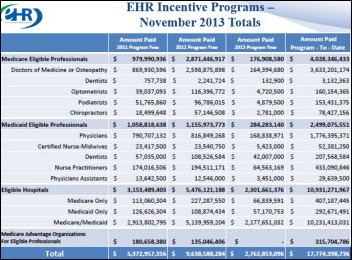

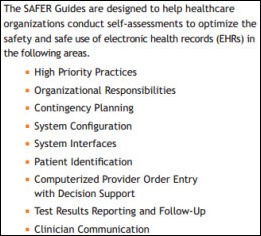






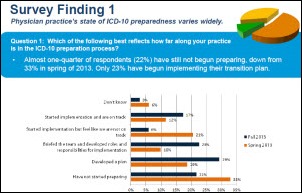


The article about Pediatric Associates in CA has a nugget with a potentially outsized impact: the implication that VFC vaccines…